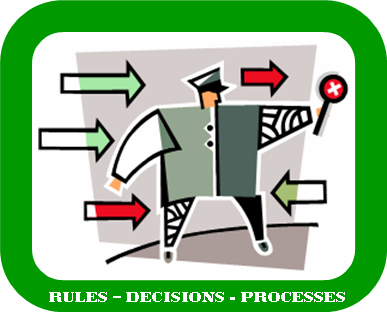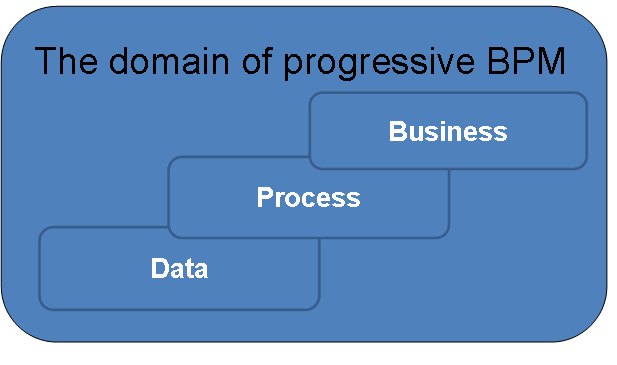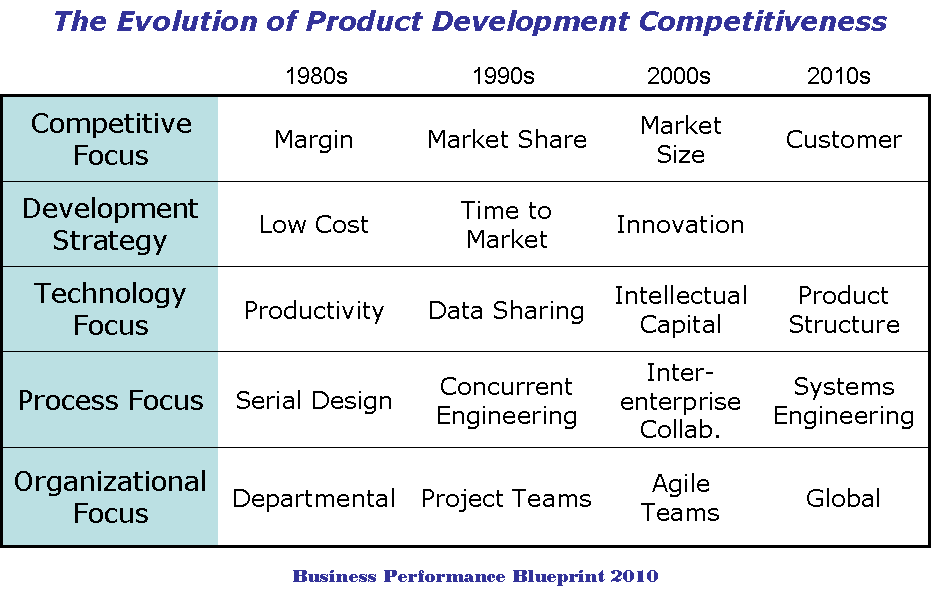TAKEAWAY: Rules are getting more attention because, more than ever, they demonstrate ability to impact productivity. This article provides insight into why this is the case, and how rules can help companies succeed in today’s competitive environment.
Rules have always been around, even taken for granted. Of late rules have been subjected to increased diligence, and increasingly subjected to automation. New approaches are enabling rules to be proactively used in business analysis, change facilitation and solution development. Progressively approached, rules are an integral part of the business blueprint and vital to performance.
Rules that can be  applied to make repeatable decisions on a predictable basis are the starting point. Such rules reside in different places, like policy, regulations, legacy computer systems, and “tribal knowledge”. These rules work in direct conjunction with decisions and processes to impact performance.
applied to make repeatable decisions on a predictable basis are the starting point. Such rules reside in different places, like policy, regulations, legacy computer systems, and “tribal knowledge”. These rules work in direct conjunction with decisions and processes to impact performance.
Why Companies are Investing in Business Rules
- Rules bring efficiency to structured repeatable decisions, so productivity is improved and more predictable. Additionally, this operational efficiency keeps experts free to spend their energy on the more unique unstructured situations.
- Rules can be made clear and transparent, enabling team understanding of how and why decisions are made. In operation you can see precisely what might need to change, and there is a workable path to do so.
- Rules, as defined and owned by the business and as supported and facilitated by IT, provide a vital opportunity to get the team communicating and working together. The nature of rules injects discipline and attention to detail, while directly serving strategy.
How to Approach Business Rules (and Get the Desired Outcomes)
Rule-oriented techniques and tools have evolved and are a proven path for business analysis, using a genuinely business-driven approach. This is resulting in high quality business requirements, and leading to the best available solutions – solutions that are flexible, get used, and deliver results.
Rules are vital and need to be treated in context of the productivity improvements that are available, and their ability to bring a company to relatively high performance teaming (or even influence the culture). To establish rules as an important element of a company’s performance architecture, deliberate steps must be taken to recognize the commitment, keep the right people involved, manage the initiative, and assure a solid support structure. In hope of distinguishing this from the usual motherhood and apple-pie, the following points are offered to help make a rules-based program successful:
- A rules-based program can start to resemble “moths drawn to a flame”, so be prepared and take advantage. Business people will have their interest piqued and stay engaged if the effort shows promise. IT will be anxious for true requirements that brings them closer to the business and the allure of high system ROI. Recognize and stand up to the pervasive challenges of credibility and communications. Start with (and maintain) a communication strategy that includes development of a business vocabulary (not geek speak).
- Recognize that business people do understand and care but will be hard pressed to stay engaged because there is real cost when they are pulled away from operations. Organize the program to involve the right business people at the right times and in the right ways. Prepare and work to cultivate the active, high-impact participation of business stakeholders with an absolute minimum time investment. Administer the program with the same clarity and transparency that is to be embodied into the rules themselves. Continuously clarify and validate roles and responsibilities.
- Recognize that IT people are required and can assume the role of program leader/facilitator. There is a significant list of items that must be diligently addressed, all from an unwavering business perspective. These include scope, charter, goals/objectives, issue management, business and system analysis and modeling, reporting/metrics, and ultimately the rules themselves. Certainly the right IT people can do this, and it is true that a rules-based program typically leads to system requirements, design etc. However, more fundamentally, note that rules present a unique opportunity to link to strategy, something that must be done in close cooperation (even deference) to the business. The point is that this is one of those key opportunities for IT to be one with the business, and it is no place for trial-and-error, poor communication skills, or questionable credibility. Send the A team.
- Use methods and spend energy to extract rules from their natural state, where ever they are (policies, systems, peoples’ heads, etc.). and establish them as a baseline within a business rule management system (BRMS). Along the way, seek to gain real-business-life insights into successes and failures. Recognize that the goal is not simply to have a centralized repository of rules, but to proactively apply them for performance improvement. Map and refine rules in relation to the established vocabulary and key performance indicators (KPIs). Decompose and understand the affected decisions, and place those decisions in their process contexts. Analyze the rules in context of affected processes and supportive automation. Automation makes a huge capability improvement, but there will always be need for a practical understanding of how it works (if the system rejects someone, it’s not acceptable to simply say it’s because the system said so). Test specific rule adjustments to anticipate their impact before deploying. Maintain a clear path for business stakeholders to realize timely adjustments as required. Treat the program as a well-qualified source of company knowledge and best-practices.




